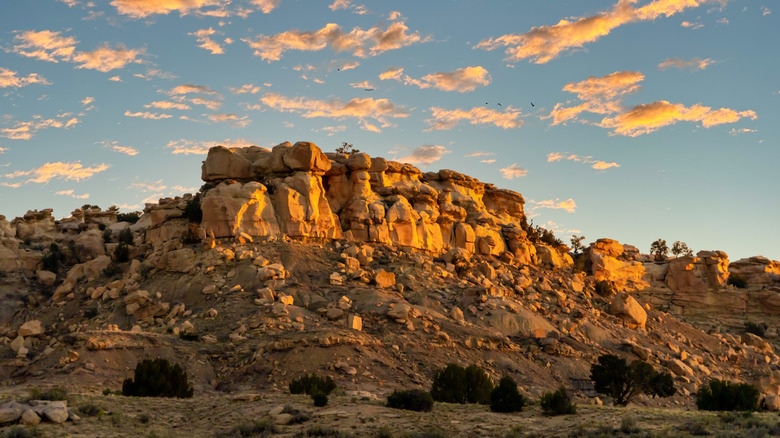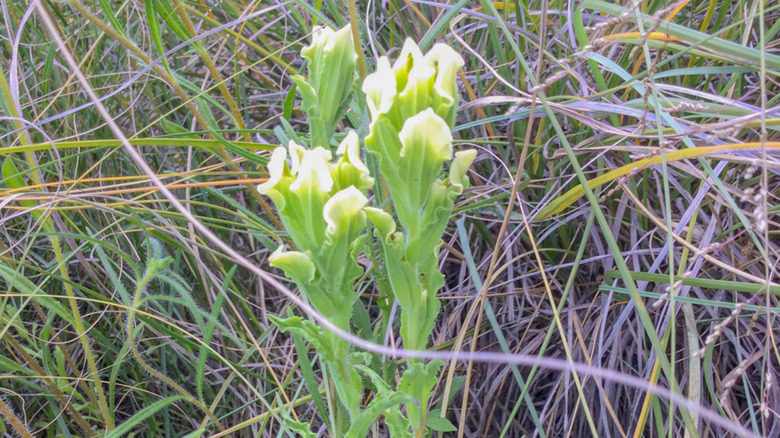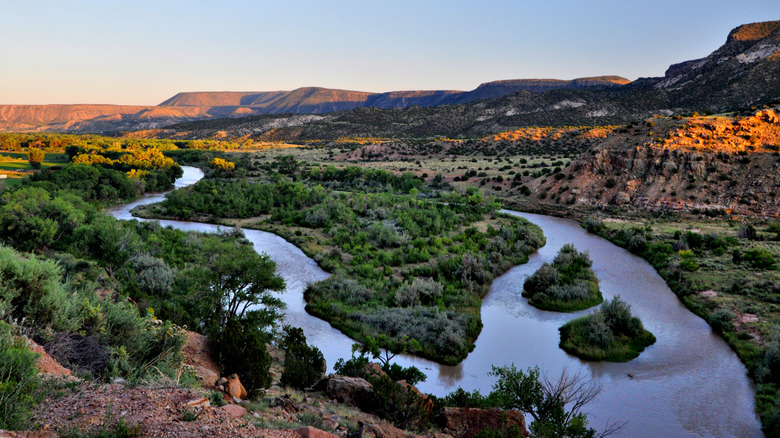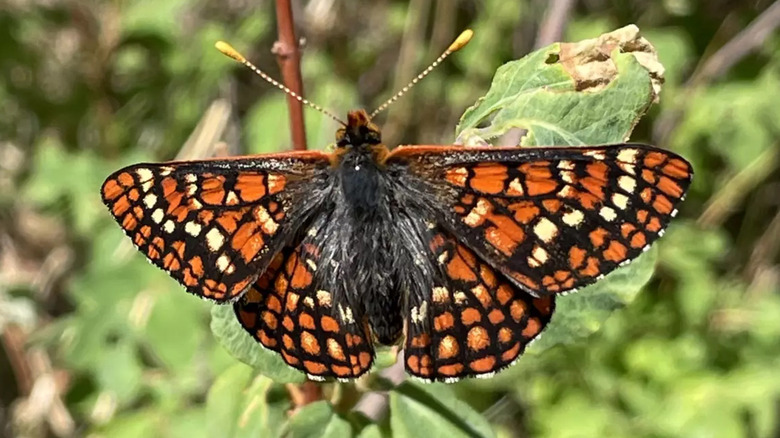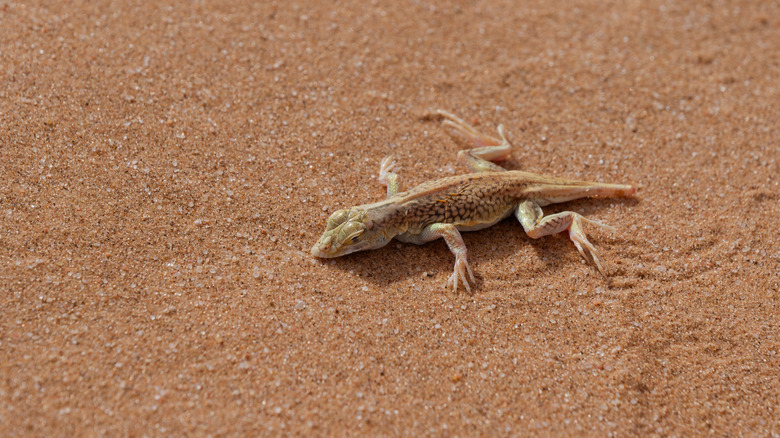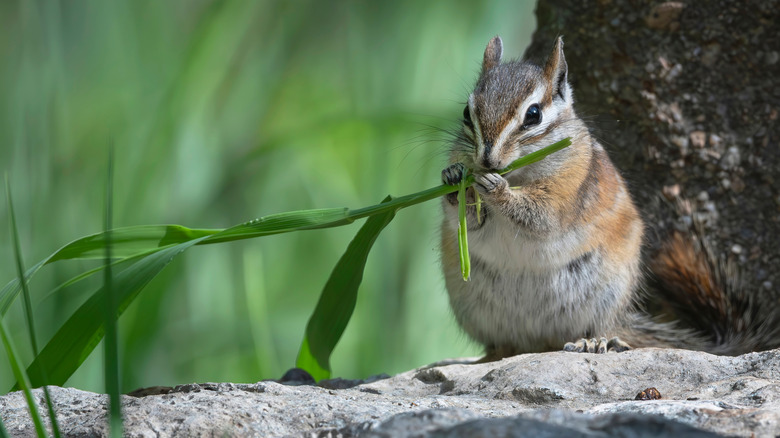5 New Mexico Species That Are Endangered
With its impressive size, specialized habitats, closeness to the Mexican subtropics, and mix of ecoregions, New Mexico is an extremely biodiverse state, brimming with roughly 4,583 known species of plants and vertebrate animals. According to the Bureau of Land Management, the state has the fourth highest native species richness in the country, making it a truly unique area of what is already a hugely biodiverse country.
Sadly, many of the species that call New Mexico home are at extreme risk of being completely wiped out. On the plus side, the state is part of a remarkable comeback story for one of North America's most endangered mammals, hosting several reintroduction sites for the black-footed ferret, which at one point was thought to have been completely wiped out. It's a major success story that shows how certain species can defy the odds. Lamentably, there are more than 1,300 species that remain endangered or threatened across the U.S., and New Mexico is home to numerous other imperilled animals and plants.
According to the Environmental Protection Agency, threatened species are those plants and animals likely to become endangered within the foreseeable future, while endangered species are defined as those most at risk. These are the species that have become so rare they are categorized as being on the brink of extinction. Sadly, New Mexico has its share of these most endangered plants and animals, and many of them are endemic to the state, meaning they only exist in New Mexico. In fact, the state ranks 11th in the country for endemism, boasting 90 known species that only exist within its borders, several of which are at risk of disappearing for good. Here are five of the most endangered species in New Mexico.
Swale paintbrush
The swale paintbrush (Castilleja ornata) is a herbaceous annual flowering plant with yellowish-red flowers which produce nectar. At one time, the plant could be found in two sites within New Mexico and 11 different areas of the Mexican states of Chihuahua and Durango, but its distribution has since declined to the extent that it is now considered endemic to New Mexico. Not only is it endemic, it only exists on one area of private land in the southwest of the state, near the New Mexico/Chihuahua border.
As New Mexico Rare Plants explains, recent searches of areas where the swale paintbrush was known to exist in Chihuahua have failed to find a single plant, as all the land had been converted to agriculture. As such, the plot of land in New Mexico is currently considered the only site in the world where this plant exists, making this a globally endangered species. This ultimately led the U.S. Fish and Wildlife Service to list the plant as endangered In December 2024. According to the agency, the swale paintbrush faces multiple threats including habitat loss and fragmentation, drought, altered water flows, growing season fires, excessive grazing, and a warming climate.
There is still hope for the swale paintbrush, however, as the Fish and Wildlife Service is set to develop a recovery plan through the Endangered Species Act — though the plant's numbers are so small that more urgent action is likely necessary. Efforts had previously been made to preserve the swale paintbrush, with WildEarth Guardians petitioning for the plant to be protected all the way back in 2007. The Center for Biological Diversity then forced the issue in 2020, filing a lawsuit to set a deadline for the protections.
Should the plant disappear altogether, not only would it be a tragic loss of a unique species that only grows in New Mexico, it would mean less support for pollinators who rely on the nectar for energy to carry out their pollination.
Alamosa Springsnail
Another species endemic to New Mexico, the Alamosa springsnail (Pseudotryonia alamosae) is another federally endangered species. The freshwater snail's tiny shell grows up to just 3 millimeters in length and it can only be found in Ojo Caliente and Warm Spring on the Alamosa River in Socorro County.
The Alamosa springsnail was designated endangered all the way back in 1991, alongside the Socorro springsnail. Unfortunately, though the creature has been listed as endangered since the early '90s, a 2023 review by the U.S. Fish and Wildlife Service recommended no change to that designation, finding that the Alamosa springsnail still faces multiple threats which have not abated in recent years. These include loss and contamination of local ground water, habitat changes such as stream diversions, mining, and poor watershed management.
That said, the population of Alamosa springsnail was almost wiped out following a 2016 flood, but the species persisted, and surveys carried out since have found the population has been recovering. Still, the animal remains endangered and continued conservation efforts are required in order to ensure New Mexico doesn't lose another of its endemic species.
Sacramento Mountains checkerspot butterfly
The rare Sacramento Mountains checkerspot butterfly (Euphydryas anicia cloudcrofti) is endemic to the Land of Enchantment, and can only be found in subalpine meadows in the Sacramento Mountains of southeastern New Mexico. This mountain range is part of the Southern Rockies and runs for 160 miles from Ancho, in south-central New Mexico to Culberson County, Texas. The checkerspot butterfly that calls these mountains home exists in a small area within that range, where it relies on an endemic plant, the New Mexico penstemon (Penstemon neomexicanus), to host its larvae.
In 2023, the U.S. Fish and Wildlife Service listed the Sacramento Mountains checkerspot butterfly as an endangered species under the Endangered Species Act. It came after altered wildfire regimes, climate change, invasive plants, and recreation combined to pose a major threat to the butterfly's habitat. While the numbers of this particular butterfly species do fluctuate, the past 20 years have seen the population numbers declining.
Because the creatures exist in a very small area of the mountains, any changes to their habitat could prove disastrous, potentially wiping out these rare butterflies forever. That makes them one of several New Mexico animal species that are on the brink of extinction. Indeed, a 2021 study in Biological Conservation looked at 273 areas of exceptional biodiversity and found that the risk posed by climate change to endemics was three and 10 times more than for native and introduced species respectively. What's more, 84% of mountain species were projected to face high extinction risk in the near future, making the Sacramento Mountains checkerspot butterfly severely imperilled. According to the Center for Biological Diversity, the Forest Service determined that this species is likely the most endangered butterfly in the United States.
Dunes Sagebrush Lizard
The dunes sagebrush lizard (Sceloporus arenicolus) isn't technically endemic to New Mexico, but the reptile's habitat is so small that New Mexico forms part of what is a crucial piece of land for this endangered lizard, which can also be found in western Texas. The small, light brown reptile was first documented in 1960 and calls the sand dunes in the Mescalero-Monahans ecosystem home. The region's short oaks provide the perfect shelter for these lizards, which measure just 2.5 inches in length and use the shade of the oak trees to their advantage by burying themselves in the cool sand beneath. This not only allows them to keep away from predators, it also means they can regulate their body temperature hidden from the sun's relentless rays
Today, the dunes sagebrush lizard, aka the sand dune lizard, can be found in roughly 4% of the 86,000 square miles of the Permian Basin, a large sedimentary basin in western Texas and southeastern New Mexico that is rich in petroleum, natural gas, and potassium. Sadly, this abundance of resources is a big part of the reason the dunes sagebrush lizard is now endangered.
In 2024 the U.S. Fish and Wildlife Service listed the reptile as endangered under the Endangered Species Act, citing loss of habitat due to oil and gas development, sand mining, and changing climate as primary threats to the survival of the lizard. It might not be entirely endemic to New Mexico, but the dunes sagebrush lizard relies on the state for a large part of its habitat and is one of the most recent New Mexico species to be listed as endangered.
Peñasco Least Chipmunk
The Peñasco least chipmunk (Neotamias minimus atristriatus) is one of the smallest chipmunks, and is yet another endemic species to New Mexico that is facing imminent extinction. The tiny chipmunk lives in subalpine forests where it uses shade from the trees to hide from aerial predators while it forages for seeds and flowers. Unfortunately, while it was once prevalent throughout the Sacramento and White Mountains of New Mexico, the Peñasco least chipmunk can now only be found in the White Mountains after years of habitat loss due to wildfires, changes in plant life within its habitat due to forest encroachment, impacts from non-native wildlife, grazing, recreation, and development. In particular, the species was likely impacted by severe wildfires in southern New Mexico which affected the animal's historic range and habitat.
The fact that the Peñasco least chipmunk has an isolated population, makes it particularly vulnerable, which is why it's surprising that the species faced a long and drawn-out struggle to gain its official endangered status, despite facing major threats to its ongoing existence for some time. After the U.S. Fish and Wildlife Service proposed that the species should be listed as endangered in 2021, that listing never came, and in 2023, the Center for Biological Diversity filed a lawsuit against the agency for not making a decision on the status of the chipmunk by the one-year deadline. In 2024 following a settlement, the Fish and Wildlife Service agreed to make a decision, and in December 2024, the agency finally listed the Peñasco least chipmunk as endangered.
However, by this point more damage had been done. Indeed, only around 46 of the chipmunks have been identified in the state recently. Meanwhile, the U.S. Fish and Wildlife Service announced it would provide 4,386 acres of critical habitat in Lincoln County, New Mexico to aid in the recovery of this endemic chipmunk.
